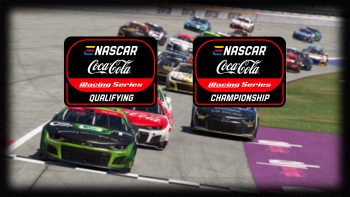
Commodore’s Garage #13 – Tire Pressures
November 18th, 2016 by Matt Holden
Tires are a racing vehicle’s only form of contact with a race track and, as a result, can be the reason why a car is a race-winner or a mid-fielder. Many factors can determine how well a tire is gripping the track surface, from tire compound, to load, and especially its own behavior when exposed to different loads. Tire pressures can directly affect how a tire responds to various loading conditions, and we’ll take a look at what goes on with the limitless tire pressure adjustments.
A Lot of Hot Air
Pressure is a value of force for a given unit of area. For tire pressure, the most common units are Pounds per Square Inch (psi) and the Pascal (Newton per Square Meter). Under static conditions, the tire’s internal pressure is set by simply adding or removing air inside the tire. This is fairly simple, and most everyone knows about this from driving on the highway. In motorsport, however, we’re concerned not only with the cold pressure, but the hot pressure as well. Cold pressures (set in the garage) are the pressure when the tire is “cold” or at ambient temperature. Once the car has gone on track and the tire is worked, we now have what is known as the “hot” pressure.
Hot pressure can be influenced by a few things, mainly heat from the tire carcass (tire loading and friction) or heat from around the tire, usually the engine or brakes. The difference between the cold and hot pressures are called “build-up”, essentially how much the tire pressure increases as the tire is worked on the race track. Different tires will transfer heat to the air or gas inside the tire differently, so while you may know how quickly the Goodyear Eagle builds up in NASCAR’s vehicles, it may not be quite the same as the short-track tires on the Late Model or Modifieds, and definitely will not be the same as the Pirellis on the Formula 1 cars.
Pressure and Contact Patch
The most immediate result from pressure adjustments is a change in the tire’s contact patch, or the part of the tire that is in contact with the pavement itself. In relation to the size of the tires themselves, the contact patch can be remarkably small, and pressure adjustments can have a dramatic effect on how large this area is. As you might expect, a larger contact patch will provide the opportunity for more grip, while a smaller contact patch can result in less grip. At lower pressures, the tire is allowed to “squish” a bit more into the track, the same way play-dough can be smashed into a surface and spread out. Higher pressures produce a more rigid tire, and with that a less-compliant tread on the tire.
In addition, pressures can also have an effect on how stiff the tire is laterally, with a direct effect on how much the tire will “roll over”, or fall over onto the sidewall. At very low pressures, drivers often claim that the car feels as if it is moving around on top of the tire, not a very confident feeling at all. At higher pressures, the tire sidewalls will become stiffer, and keep the tread of the tire in place under cornering loads. While this can provide a more positive feel to the driver, it can be a problem when pressure build-up is considered (more on that below).
Pressure and Tire Spring Rate
Where the tires really start to affect handling is the tire’s spring rate. Similar to the springs installed in the suspension, tires will compress and exert an opposing force to any vertical loads the car feels while going around the track. This spring rate, like the suspension spring rate, has a direct impact on the car’s handling, especially in oval racing. In stock car racing, the tire spring rate can vary from track-to-track, especially in NASCAR where the tire supplier brings a unique tire to suit a track’s conditions. The rate can also vary from left-to-right, with the left-side tires typically having a lower spring rate than the right-side tires for a left-turn oval. For example, the Goodyear tire used in 2015 at Charlotte indicated (on the data sticker) a right-side spring rate around 1410 lb/in and around 1350 lb/in on the left-side tires. (NOTE: These figures are determined under controlled conditions and intended to help “match” tire sets, used here as an example of general tire behavior.)
As you might expect, we’re always looking to tailor the pressures (and spring rates) to a given track. At shorter tracks with less vertical load, we can get away with much lower pressures. Tracks such as Martinsville, Langley, or Stafford Motor Speedway allow for extremely low pressures to be run without major issue. This produces a lot of mechanical grip due to lowering the tire’s spring rate, as well as increasing the size of the tire’s contact patch, which adds up to a lot of grip! On the other hand, big tracks such as Michigan or Charlotte, and even the faster short tracks such as Bristol and Iowa, need higher tire pressures to deal with the vertical loads and higher speeds. For example, it’s not uncommon to see left-side tire pressures lower than 10psi at Martinsville in the Cup series.
Pressure Tuning
Now that the basics are out of the way, we’ll start looking at how to set pressures in the garage. Cold Pressure starting points will be primarily influenced by the driver’s style. For instance, I tend to build up the RF tire very heavily and the left-side tires evenly, while Nick Ottinger tends to build up the right-side tires evenly and the LR tire heavily. I’ve seen other drivers who build up the RR tire heavily, and know of real-world drivers who were notorious for causing both front tires to build up tremendously. This has to be considered when setting the initial pressures, and is simple enough to find in a few test sessions. In addition, setting the left-to-right difference in pressure can be important as well, depending on what the driver is looking for. For short races where speed is key, a narrow split between each side can be useful in giving the driver confidence early in the race. Longer runs may call for larger differences in pressures, and the driver’s ability to deal with low-pressure tires is important in this situation. I know of situations in the NASCAR Class B series where drivers have won races on as much as 25psi from left-to-right, and even as low as 7psi between each side. It’s simply a matter of what is necessary, and how much the driver can tolerate.
While it’s impossible to get all four tires to build up exactly the same, you can adjust the cold pressures to prevent major differences in what the pressures build up to over a tire run. If you have your car set up properly, but the right-front tire builds up 5psi more than any other tire on the car, it will inevitably have a significant understeer condition, and there’s almost nothing you can do to the chassis that will fix that. A simple adjustment to the cold pressures can bring the build-up closer together, resulting in a more consistent feel for the driver throughout a run.
Setting the pressures based on tire temperature and wear is also extremely important. If the temperatures on a tire show a hot or worn center, it’s a sign that the pressure is too high, and center of the tire is effectively “lifting” the outer edges of the tire. Similarly, a cool or un-worn center is a sign of an under-inflated tire. Both conditions can result in a loss of available grip and should be adjusted accordingly.
In-race Adjustments
In a race, it’s important to know how your car builds pressure, and which tires are likely to over-build in a long run. In the event that your car starts to swing one way or the other on handling, a look at the notes will tell you which tire may be causing the issue, and simply your decision on what to adjust when it comes time to pit and make adjustments. For instance, if all of your practice runs showed that the left-rear and right-front tires were building up more than the right-rear and left-front, a swing towards a tight condition during the race is very possible. In that event, reducing the pressures in the right-front or left-rear tires would be a very safe adjustment, and will likely alleviate whatever is happening on-track.
The most important influence on how pressures build up is simply the driver. How the driver approaches the first few laps on a set of tires can lay the groundwork for how the car will change through a run. If a driver pushes very hard and makes aggressive moves early, it can build the pressures up differently than if the first few laps were more conservative. Drivers with a good eye for how a race is progressing can change how they “break in” a set of tires in the first few laps. If a race is becoming a series of short runs, they may push harder after restarts, since longer runs aren’t expected. However, if a race is producing long green-flag runs, they may run more conservative laps following a pit stop, expecting to be on that set of tires for a long time. If done properly, the difference in lap time at the end of the run can be substantial, making late-run passes very quick and easy.
Another adjustment available to the driver is brake-induced pressure buildup. At a track with any form of braking, heat from the brake systems will soak into the tire, increasing the pressure. It’s not uncommon for some drivers to adjust the brake bias in an attempt to build up pressure in a given tire to cure handling issues. For instance, if a car is becoming loose, or oversteering, the driver may shift the brake balance forward in an attempt to heat the front brakes up and increase front tire pressure slightly. While the brake adjustment can fix corner entry issues, the resulting pressure change can cure issues in the center and exit of the corner. This is not a significant adjustment, however, and does not replace simple pit-road pressure adjustments!
Notes are Important!
The notes section of the garage should never be ignored, and is a great place to record what pressures were for a given practice session. Whenever you go to a different track, it can give you a massive head start to look back at a similar track and see what pressures you ran at the previous track. Or, if you run a track for a second time in a season, this can also be a big help! It’s a good practice to include in your notes section what the pressures were building up to over a run, and what you may have adjusted to during the race, in order to make changes to compensate at the next track. Tracks with similar characteristics, such as Iowa and Richmond or Texas and Atlanta, can often use the same pressure settings for the tires and it’s important to know what happened in the last race so you aren’t doomed to repeat the same fate. On a similar note, if you are in the process of developing a new setup for a car, keeping pressures consistent is key to understanding what is changing from track-to-track. Eliminating unnecessary problems with the tire pressures can help you focus more on the chassis itself, and save you from a lot of headaches in the long run.
~~~~~~~~~~~~~~~~~~~~
To keep up to date with The Commodore’s Garage, return to Sim Racing News every Friday afternoon and “Like” our page at https://www.facebook.com/CommodoresGarage














































